Golden Fields and Gourmet Delights: Your Ultimate Guide to the Napa Valley Mustard Festival
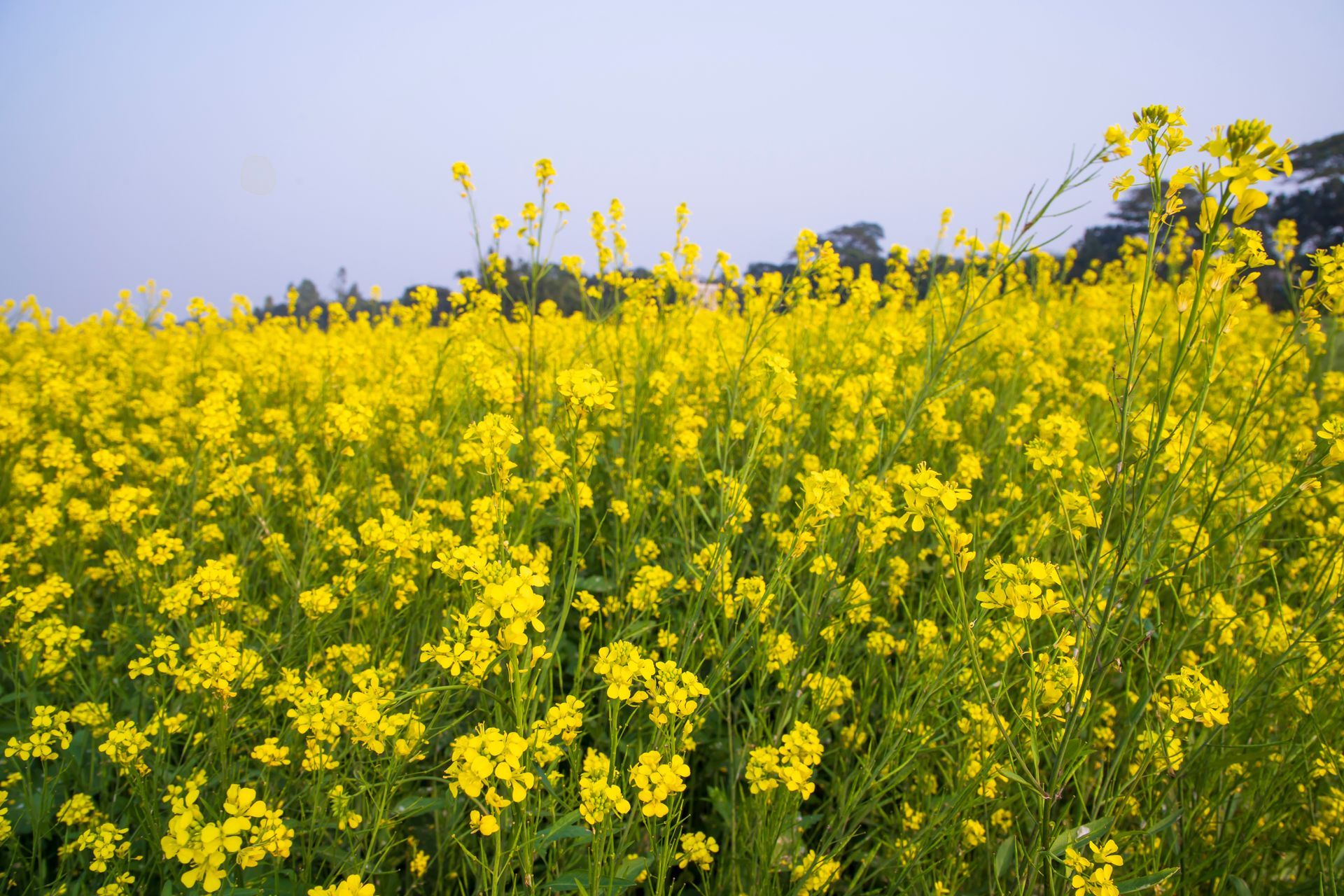
Another Napa Valley Tour Idea
Most people know Napa Valley for its world-renowned wine and some might even be familiar with its olive orchards, but not many know about the magic that unfolds during Mustard Season. As the vineyards rest, bright yellow mustard flowers spring to life, creating a breathtaking landscape that transforms Napa into something truly special. This lesser-known season brings a burst of color and excitement to the valley, and there’s so much more to discover than just the beauty. Curious about what makes Mustard Season so captivating? Let’s explore!
As winter melts away, Napa Valley is painted in a vibrant sea of yellow, signaling the start of mustard season. But this isn’t just any flower; mustard blossoms blanket the vineyards, creating a striking contrast against the dormant vines. The beauty of the season isn’t just in its colors, though. Why do these bright flowers suddenly appear? What role do they play in the world-famous wine country? Beyond their Instagram-worthy charm, mustard season holds secrets about the land, its history, and the winemaking process itself. Curious to discover more about this golden spectacle?
The body content of your post goes here. To edit this text, click on it and delete this default text and start typing your own or paste your own from a different source.
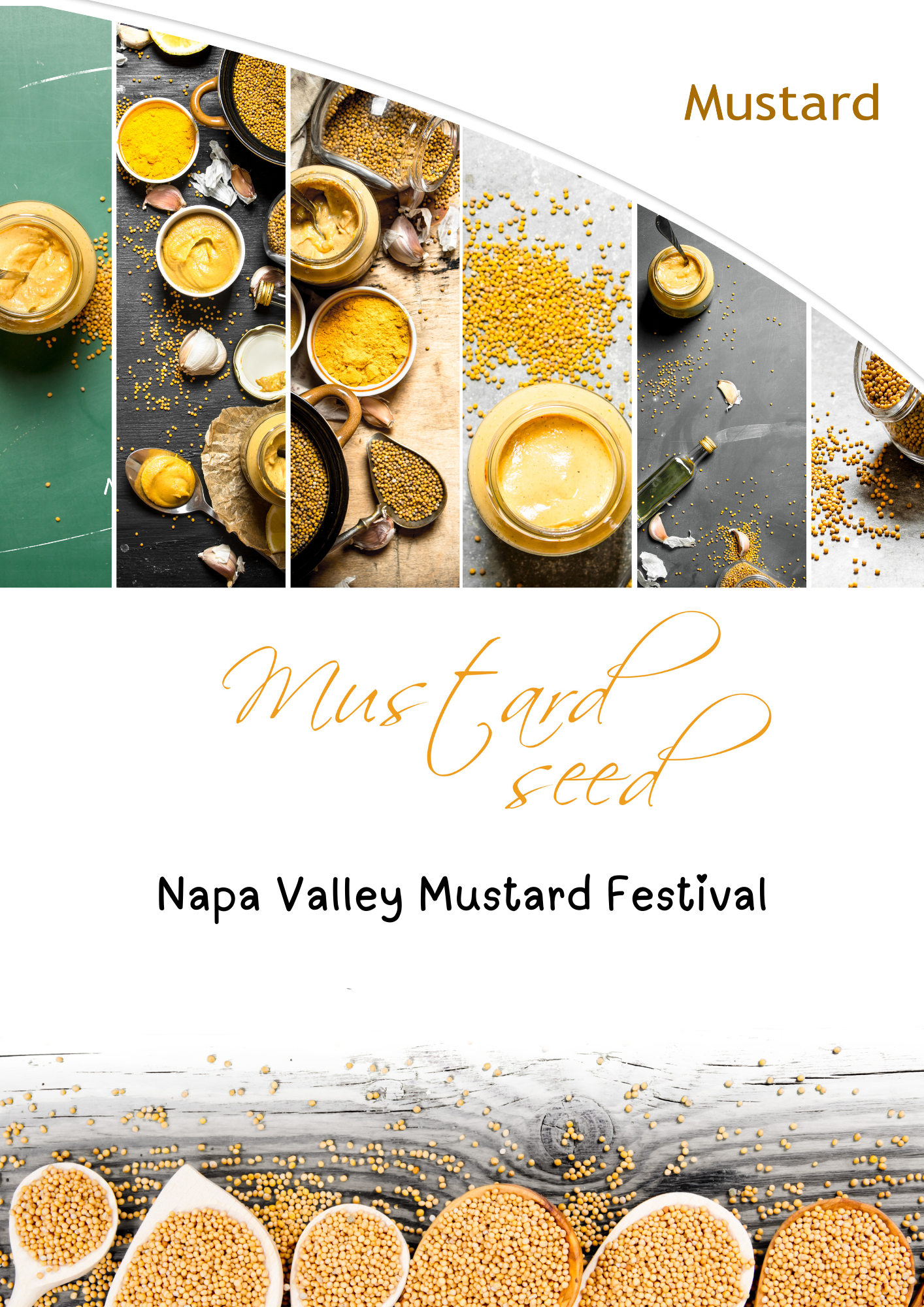
History of Mustard Season
The mustard plant is not native to Napa Valley. Local legend says a Franciscan missionary first spread mustard seeds across California in the 1700s while scouting locations for missions
Some say the missionary scattered the seeds wherever he went because he loved mustard. Others claim he secretly left a trail of mustard seeds to help find his way back, as he had a poor sense of direction
The Spanish colonizers who came to the Pacific Coast in the 1700s used mustard as a spice crop. Over the years, its use as a crop protector became widespread as its beneficial attributes were recognized.
The Napa Valley Mustard Festival originated in 1994 as a way to attract visitors during the region's off-season. The wild mustard plants, which naturally grow between vineyard rows, create a stunning visual spectacle that has since become an iconic symbol of Napa Valley's winter landscape. Over the years, the festival has evolved into a multi-week celebration that showcases the area's culinary prowess, artistic talent, and natural beauty.
Health Benefits of Mustard Seeds
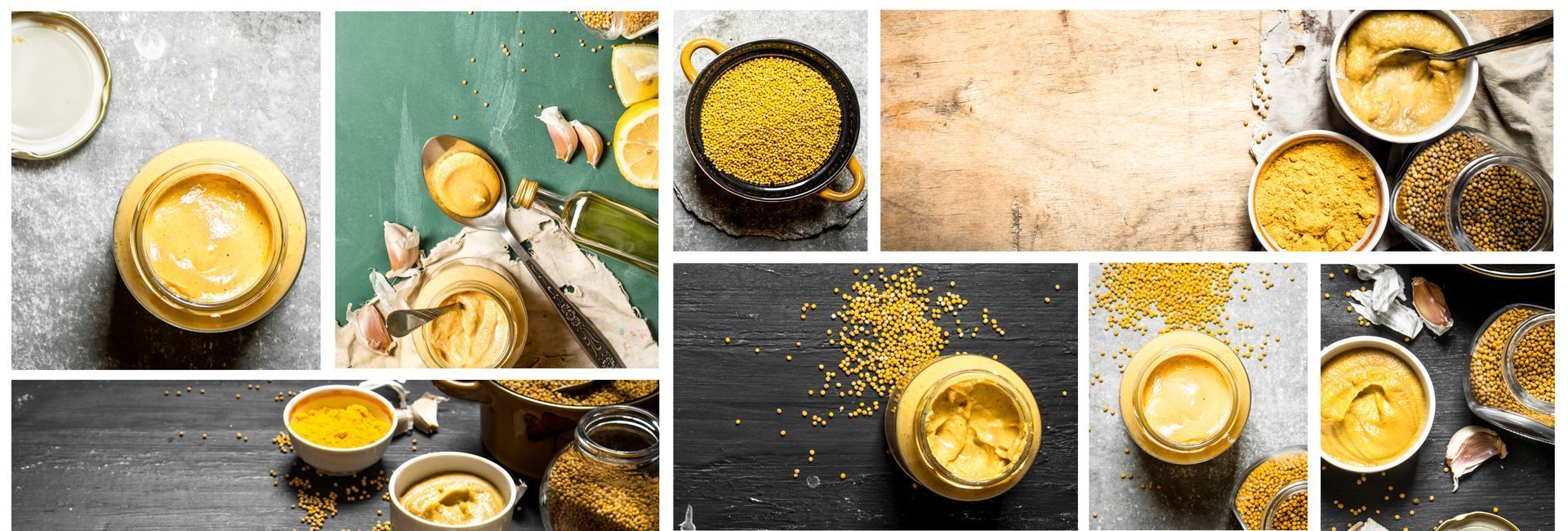

Mustard seeds provide several surprising health benefits that many people are unaware of:
Rich in nutrients: Mustard seeds are a good source of fiber, protein, calcium, iron, magnesium, phosphorus, and omega-3 fatty acids
May reduce inflammation: Compounds in mustard seeds called isothiocyanates have anti-inflammatory properties that may help reduce inflammation in the body
May improve digestion: Mustard seeds contain enzymes that can help break down food in the stomach and improve overall digestion
May have anticancer properties: Some studies suggest compounds in mustard seeds may inhibit the growth of cancer cells. Mustard seeds are packed with glucosinolates and myrosinase, which may prevent the growth of cancer-causing cells.
Deeper Dive Into a Little Seed
Glucosinolates are special compounds found in cruciferous vegetables like broccoli, cabbage, and mustard seeds. They might not sound familiar, but these natural chemicals have some pretty amazing health benefits. Here's why glucosinolates matter:
Found in Healthy Veggies:
Glucosinolates are naturally found in many plants that have a strong or bitter taste, like mustard, horseradish, and cabbage.
Health Boosters: When we chew or cut these veggies, glucosinolates change into other helpful compounds, like isothiocyanates, thanks to an enzyme called myrosinase. These new compounds help reduce inflammation, protect our cells, and fight off harmful stuff in our bodies.
Cancer Fighters: Some research shows that glucosinolates may help stop the growth of cancer cells, making these veggies extra important for cancer prevention.
Good for the Heart: Glucosinolates might also help keep your heart healthy and reduce the chances of heart disease.
Protects the Brain: Scientists believe that these compounds can protect the brain and may lower the risk of diseases that affect memory and thinking.
Packed with Nutrients: Mustard seeds, for example, are full of good stuff like fiber, protein, calcium, and omega-3 fatty acids, all of which are important for overall health.
In short, glucosinolates are powerful compounds found in veggies that may help protect against cancer, heart disease, and brain issues. Eating more of these foods can be a smart way to boost your health!
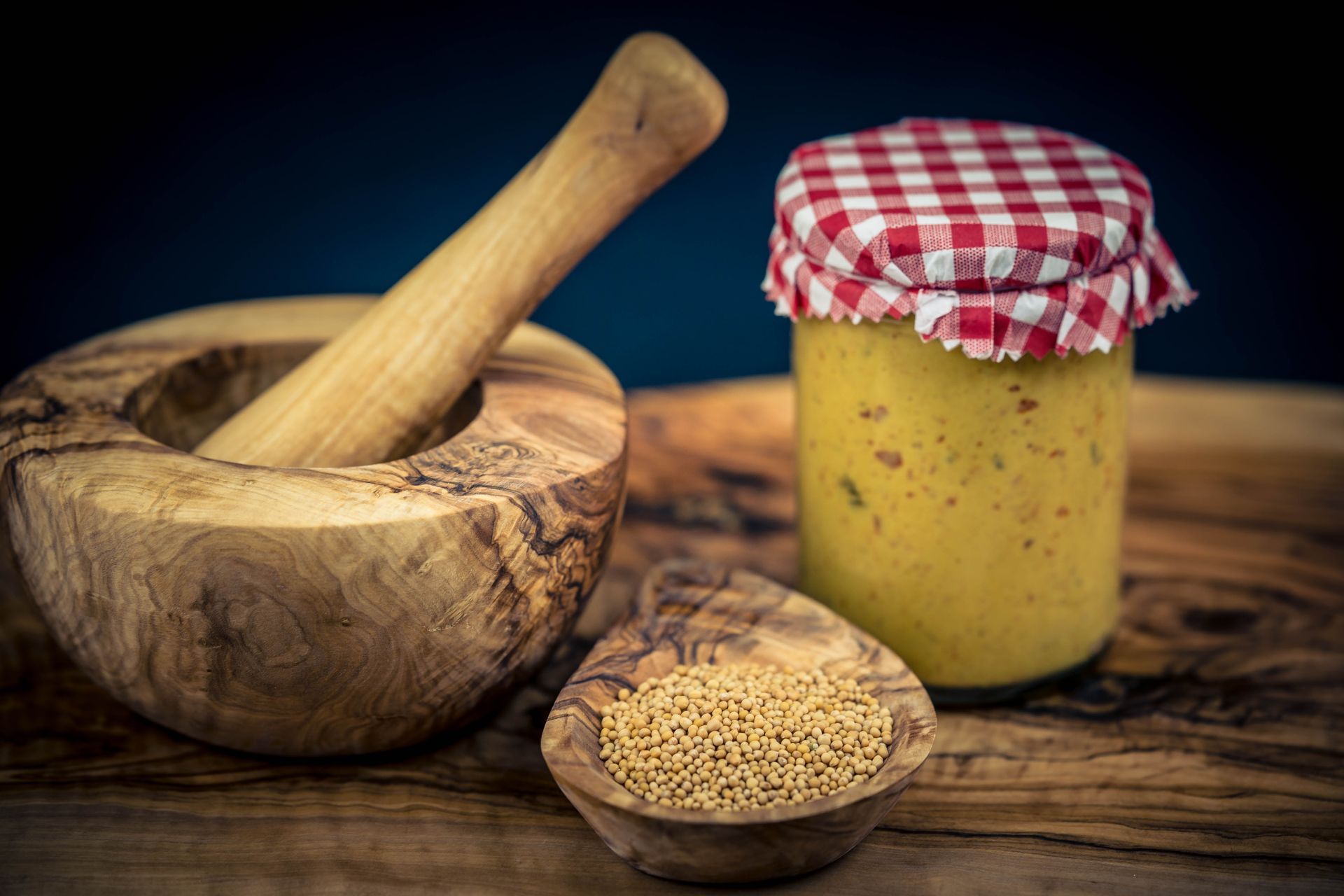
Myrosinase is an important enzyme found in veggies like broccoli, cabbage, and mustard that helps protect the plants from bugs. When these plants get damaged (like when we chop or chew them), myrosinase mixes with other compounds called glucosinolates to create special health-boosting substances, like sulforaphane. Here's why this matters:
Boosts Health Benefits: Myrosinase helps produce compounds like sulforaphane, which have been shown to reduce inflammation, fight off harmful substances in the body, and may even help lower the risk of certain cancers.
Raw vs. Cooked Veggies: When you eat raw cruciferous vegetables, myrosinase goes to work quickly in your stomach, making these health-boosting substances easy for your body to absorb. But if you cook these veggies, the myrosinase gets destroyed. However, adding raw foods like broccoli sprouts or mustard can bring back the benefits by helping those cooked veggies release their good stuff.
Helps Fight Cancer: Pairing cooked veggies with raw ones containing myrosinase (like adding mustard to cooked cabbage) can supercharge their ability to help fight cancer, making them even more powerful together.
Affects Taste: The bitter taste you might notice in veggies like Brussels sprouts or kale comes from this reaction between myrosinase and glucosinolates. It plays a big role in how these veggies taste and whether or not we enjoy eating them.
In short, myrosinase helps unlock the full health potential of cruciferous vegetables, especially when eaten raw or paired with other foods. Understanding how it works can help us get the most out of these super healthy veggies!
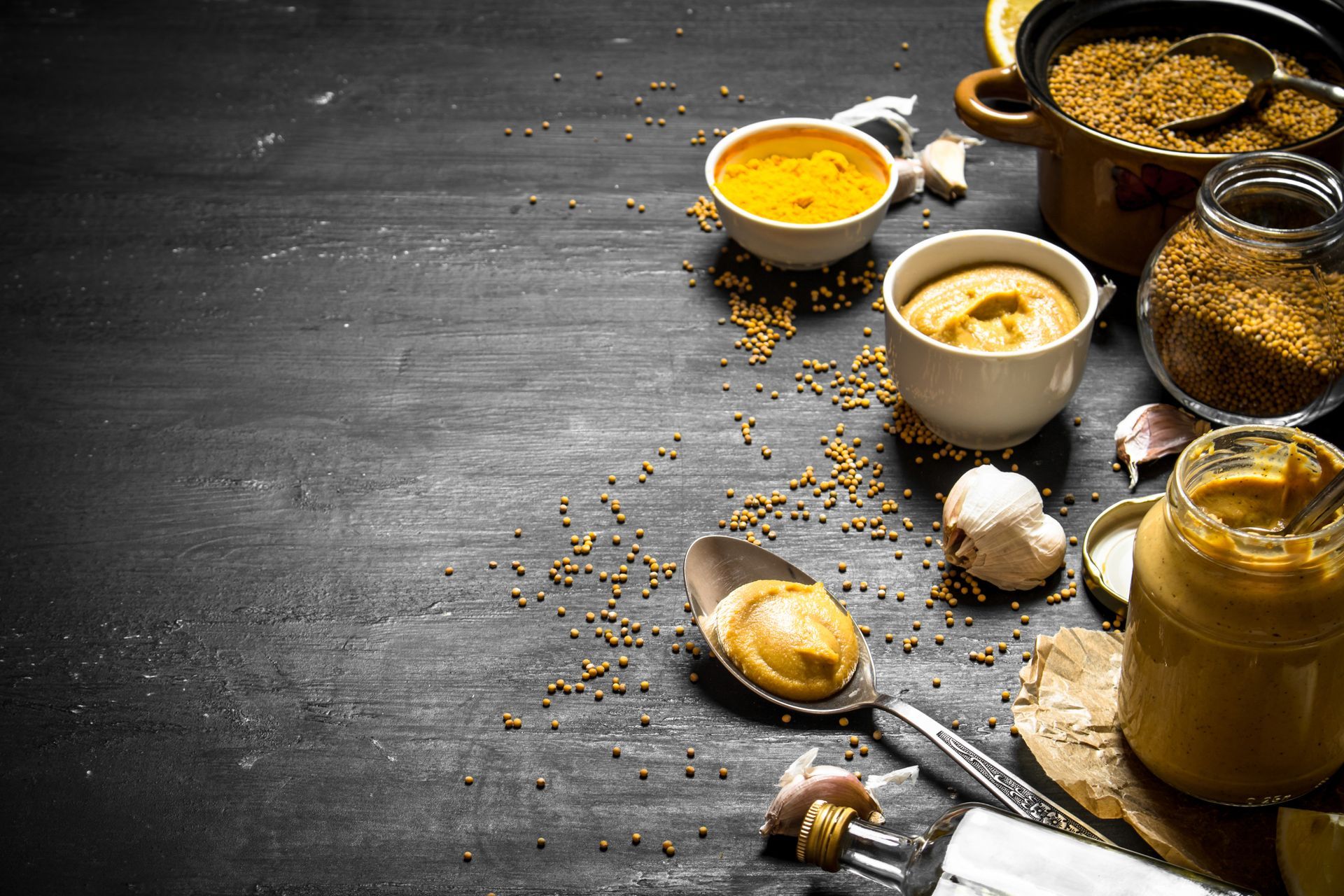
More Mustard Magic
The Napa Valley Mustard Festival is a vibrant celebration that transforms the renowned wine country into a sea of golden blossoms. This annual event, typically held from January to March, offers visitors a unique opportunity to experience the region's natural beauty, culinary excellence, and rich cultural heritage. In this comprehensive guide, we'll explore the history, activities, and highlights of the Napa Valley Mustard Festival, providing you with all the information you need to plan an unforgettable visit.
Mustard plants play a crucial role in Napa Valley's viticulture. These plants:
· Act as a cover crop, preventing soil erosion
· Provide natural pest control
· Offer essential nutrients to the soil when tilled
· Create a breathtaking landscape that draws visitors from around the world
Festival Highlights and Activities
Mustard Photography Tours
One of the most popular activities during the festival is capturing the stunning mustard-covered landscapes. Professional photographers offer guided tours to the best spots for photographing the golden fields. These tours provide:
· Expert advice on composition and lighting
· Insider knowledge of lesser-known vantage points
· Opportunities to photograph historic wineries amidst the mustard blooms
For photography enthusiasts, the Napa Valley Mustard Festival Photo Contest is a must-participate event. Submissions are typically accepted throughout the festival period, with winners announced at a gala event.
Culinary Experiences
This festival celebrates Napa Valley's renowned culinary scene with a variety of food-centric events:
a) Mustard-Inspired Menus Many local restaurants create special menus featuring mustard as a key ingredient. From mustard-crusted lamb to honey-mustard glazed salmon, these dishes showcase the versatility of this humble condiment.
b) Food and Wine Pairings Participating wineries offer unique food and wine pairing experiences, often incorporating mustard-based dishes to complement their wines. These events provide an excellent opportunity to explore the interplay between Napa's world-class wines and innovative cuisine.
c) Cooking Demonstrations Local chefs and culinary experts host cooking demonstrations, teaching visitors how to incorporate mustard into their own recipes. These hands-on sessions often include tastings and take-home recipes.
Art Exhibitions and Workshops
The Napa Valley Mustard Festival also celebrates the region's vibrant art scene:
a) Plein Air Painting Events Artists gather to capture the beauty of the mustard-covered landscapes in real-time. Visitors can watch artists at work and even purchase freshly created pieces.
b) Art Exhibitions Galleries throughout Napa Valley host special exhibitions featuring works inspired by the mustard season. These shows often include a mix of paintings, photographs, and sculptures.
c) Art Workshops For those looking to unleash their creativity, various workshops are offered during the festival. These may include watercolor painting, photography classes, or even mustard-dyeing textile workshops.
Outdoor Activities
The festival encourages visitors to explore Napa Valley's natural beauty:
a) Hiking and Biking Tours Guided hiking and biking tours take visitors through scenic mustard-filled trails, offering breathtaking views and photo opportunities. Many tours include stops at local wineries for tastings.
b) Hot Air Balloon Rides For a truly unforgettable experience, hot air balloon rides offer a bird's-eye view of the golden landscape. These early morning flights often conclude with a champagne brunch.
c) Picnics in the Vineyards Some wineries offer specially curated picnic baskets filled with local delicacies, perfect for enjoying amidst the mustard-covered vineyards.
Educational Events
The festival also provides opportunities to learn about Napa Valley's ecosystem and agriculture:
a) Sustainability Talks Experts host discussions on sustainable farming practices and the role of cover crops like mustard in maintaining vineyard health.
b) Mustard Plant Workshops These hands-on sessions teach visitors about the different varieties of mustard plants, their culinary uses, and how to grow them at home.
c) Winemaker Talks Local winemakers share insights into how the mustard season affects wine production and the unique characteristics of wines produced in Napa Valley.

Planning Your Mustard Visit
To make the most of your Napa Valley Mustard Festival experience:
Timing: The festival typically runs from late January to March, with peak bloom usually occurring in February. However, exact timing can vary based on weather conditions.
Accommodations: Book your stay well in advance, as this is a popular time to visit. Consider staying in one of the charming bed and breakfasts in the area for a more intimate experience.
Transportation: Consider hiring Napa Valley Transportation for your touring needs. They offer special professional tour accomodations.
Dress: Layer your clothing, as Napa Valley weather can be unpredictable. Don't forget comfortable shoes for walking through vineyards.
Camera: Bring a good camera to capture the stunning landscapes. Early morning and late afternoon offer the best lighting for photography.
In summary, mustard season has an interesting history in Napa Valley stemming back to the 1700s. The mustard seeds themselves also provide several important health benefits related to their nutrient content and anti-inflammatory, digestive, and potential anticancer properties. However, more research is still needed to fully understand the extent of mustard seeds' health effects.

Ready to experience Napa Valley in its most vibrant season? Let Napa Valley Transportation take you on a scenic journey through the breathtaking mustard fields, with convenient and luxurious transportation tailored to your perfect day. Book your ride now and let us show you the hidden beauty of Mustard Season—stress-free and unforgettable!
